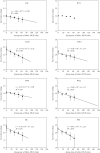Subjective wet perception assessment of fabrics with different drying time
- PMID: 30225071
- PMCID: PMC6124134
- DOI: 10.1098/rsos.180798
Subjective wet perception assessment of fabrics with different drying time
Abstract
Wet perception involves a complex neurobiological mechanism and it is a crucial factor affecting the wear comfort in daily life. A subjective wet perception assessment was conducted against wetted fabrics. The assessment method was set to demonstrate the sensation felt by the wearer in recovery period after light activities, and assumes that there is no further sweat secretion. Twenty participants participated in the assessment. Participants were presented with fabrics dried with different duration for simulating garments dry during recovery period. A new fabric driver was built to simulate body movements during wear. The driver drove specimens and reference fabrics on participants' forearms. The two-arm configuration of the fabric driver helps to enhance the reliability of assessment results. The participants were asked to give wetness rating on each sample in ratio scale. We conclude that log10 of subjective wetness rating has linear relationship with drying time of fabric (DToF) and amount of water in fabric. A novel wetness factor (WF) is developed to quantify the effects of wet perception and exposure time induced by a drying fabric. WF is the area under curve of wetness rating against DToF. A smaller WF indicates that a user suffers less from wet sensation.
Keywords: comfort; drying; evaporation; fabric; subjective assessment; wet perception.
Conflict of interest statement
The authors do not have competing interests.
Figures








References
-
- Clark RP, Edholm OG. 1985. Man and his thermal environment. London, UK: Arnold.
LinkOut - more resources
Full Text Sources
Other Literature Sources

